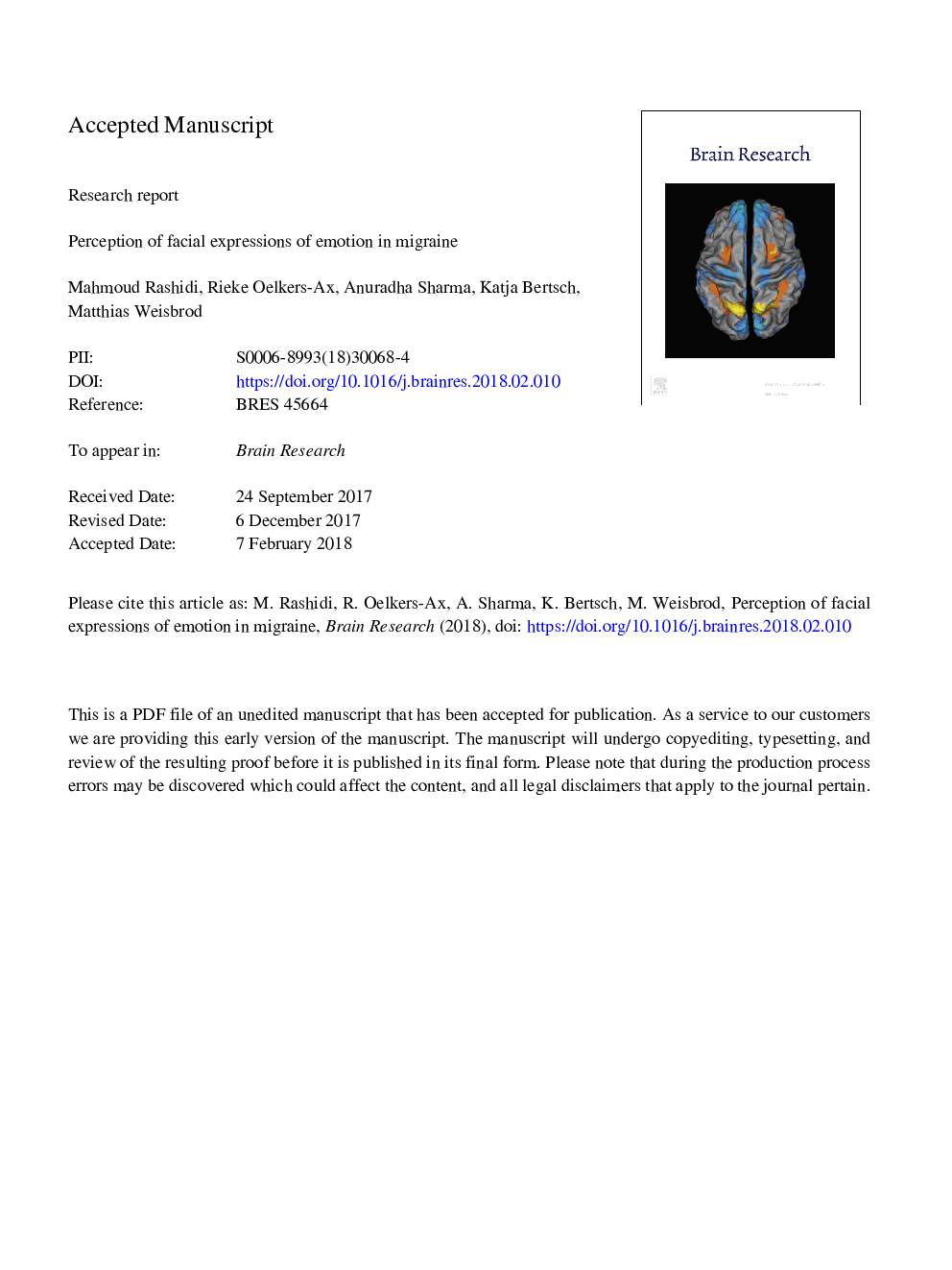| Article ID | Journal | Published Year | Pages | File Type |
|---|---|---|---|---|
| 8839850 | Brain Research | 2018 | 25 Pages |
Abstract
Both lower-level perceptual changes and especially higher-level cognitive alterations in individuals with migraine are poorly understood. Here, we behaviorally and electrophysiologically investigated the perception of emotional facial expressions in migraine. Young female individuals with migraine and healthy controls watching neutral faces gradually shifting to either happy, fearful, or angry expressions were asked to classify the facial expressions as quickly and accurately as possible by pressing a corresponding button, and to keep looking at the face until the last frame disappeared. Migraine individuals, compared to healthy controls, had a reduced habituation in the N170 time interval towards a gradually emerging emotional expression. The early P1, the early posterior negativity (EPN), and the late positive potential (LPP) amplitudes were not statistically different between groups and among expressions. The mean reaction time for recognizing an expression did not differ between groups and it was not at a cost of more incorrect responses. Interestingly, the amplitude of the early posterior negativity correlated negatively with the time interval since the last attack. It is concluded that young female individuals with migraine, compared to healthy controls, do not show a biased emotional facial processing toward positive or negative expressions.
Related Topics
Life Sciences
Neuroscience
Neuroscience (General)
Authors
Mahmoud Rashidi, Rieke Oelkers-Ax, Anuradha Sharma, Katja Bertsch, Matthias Weisbrod,
